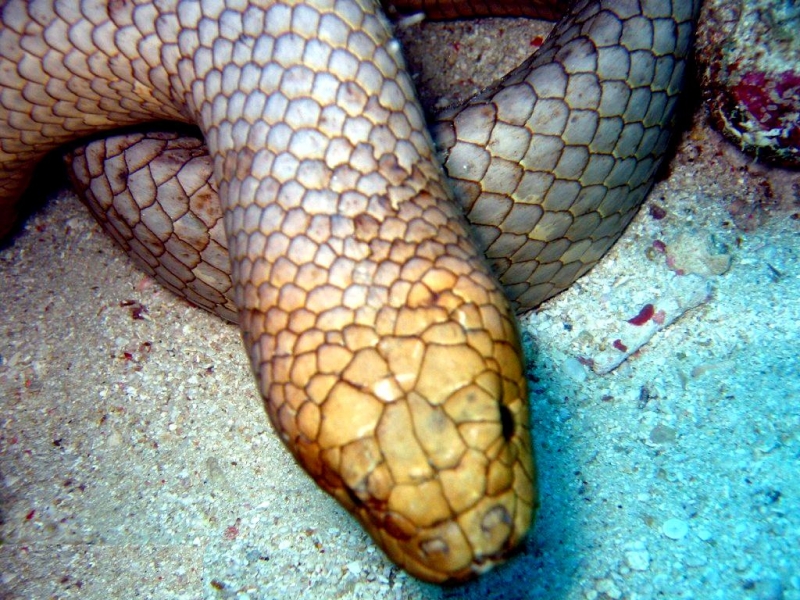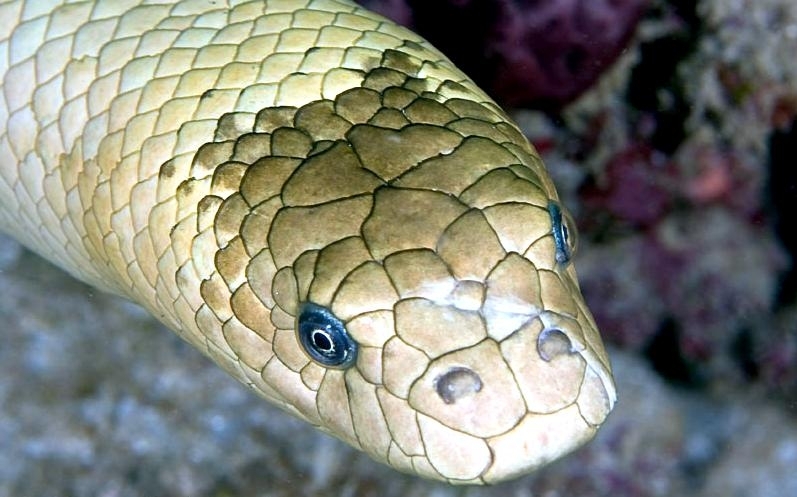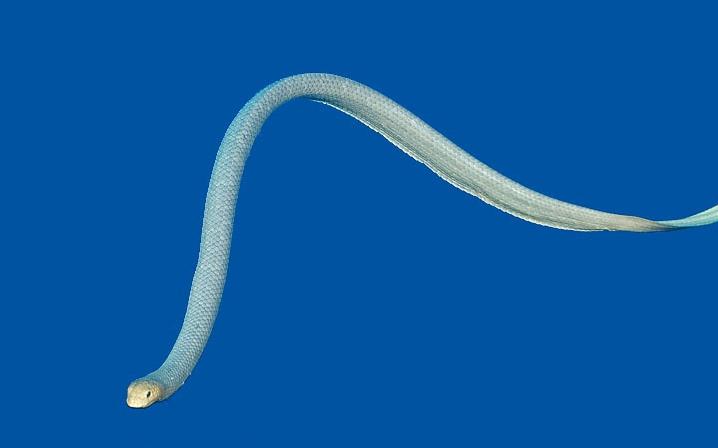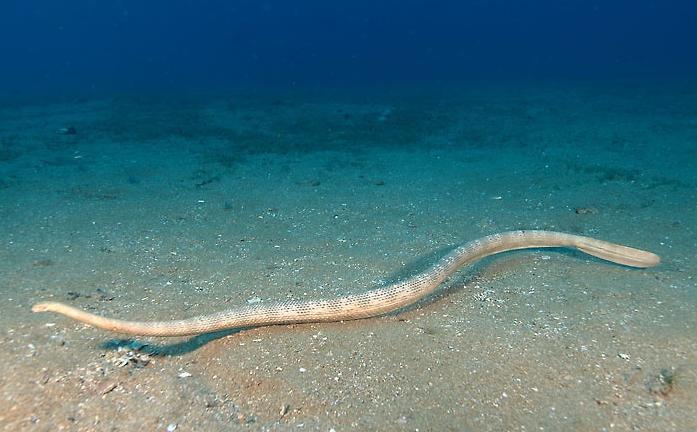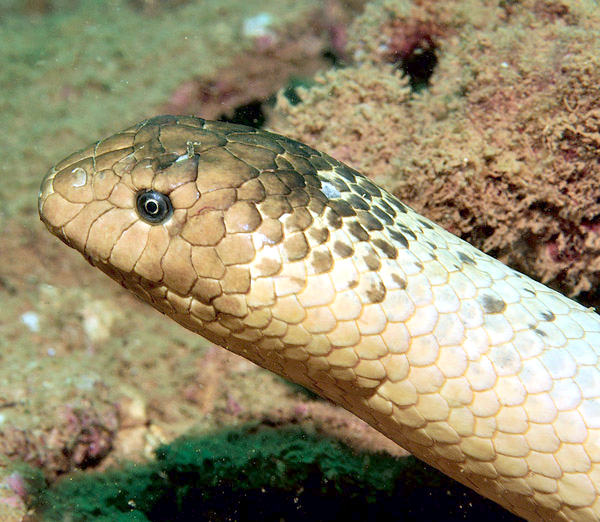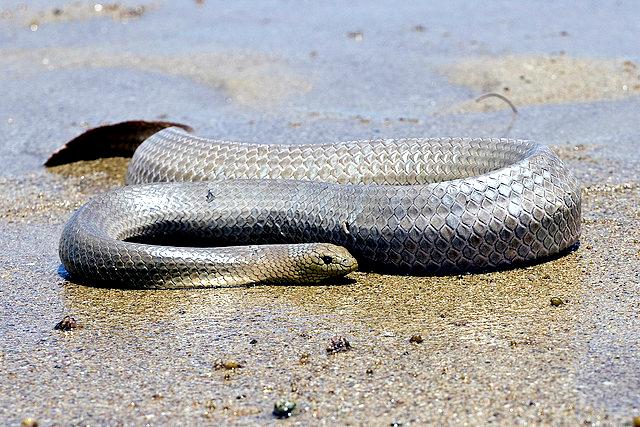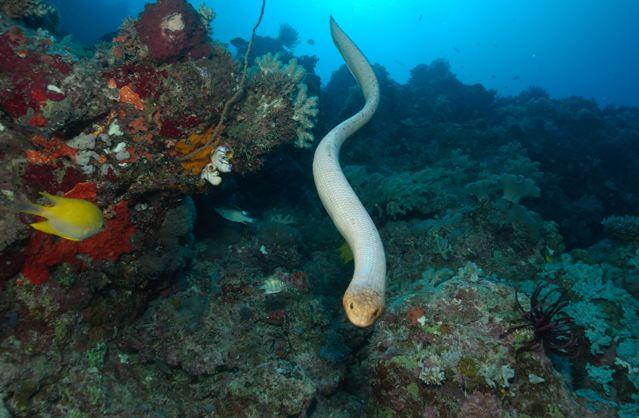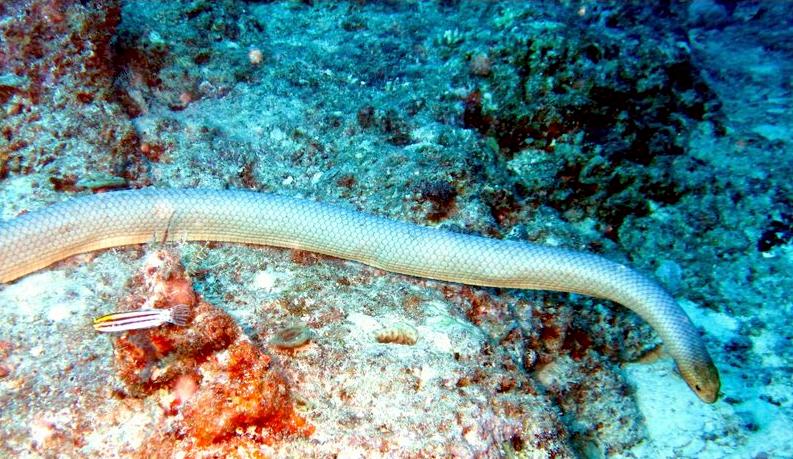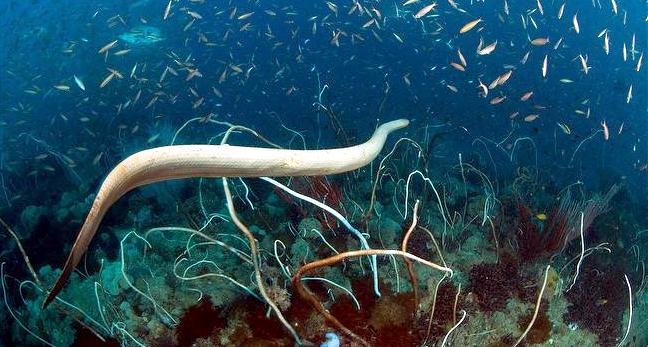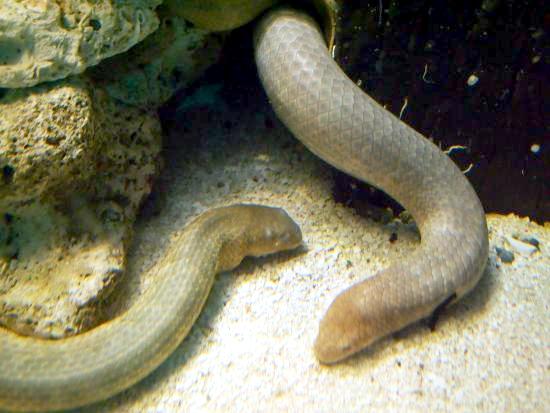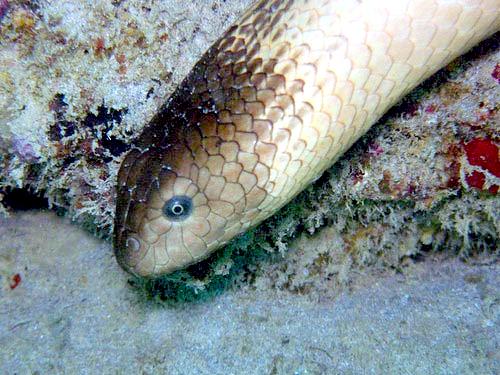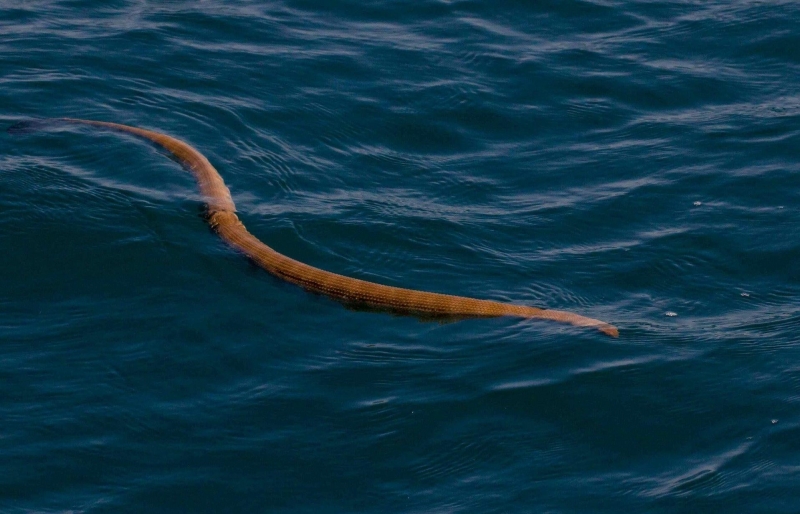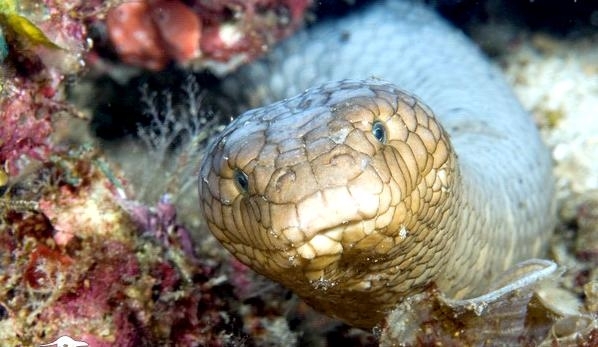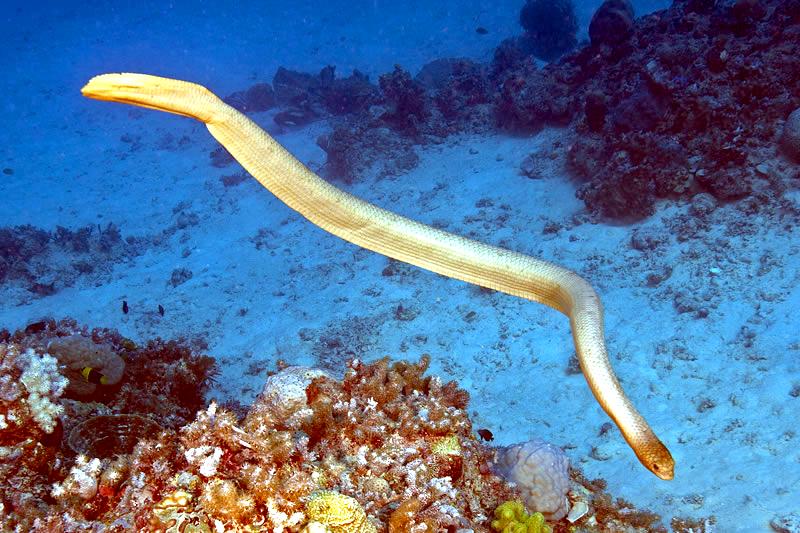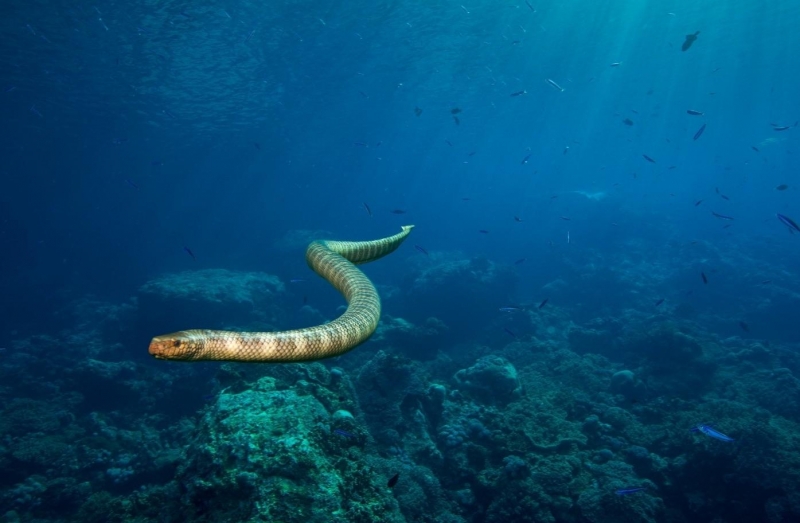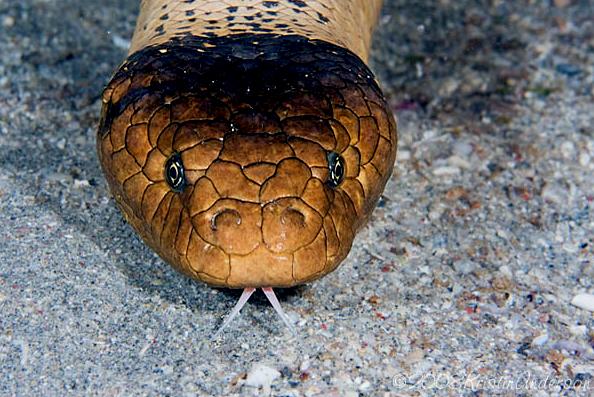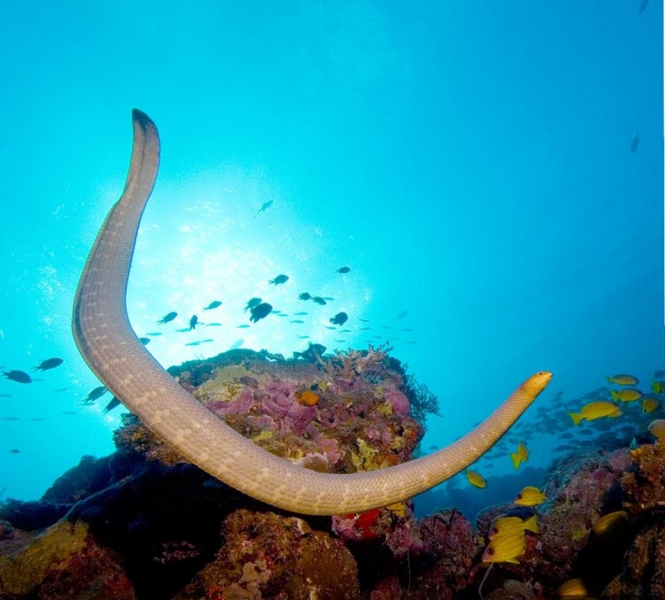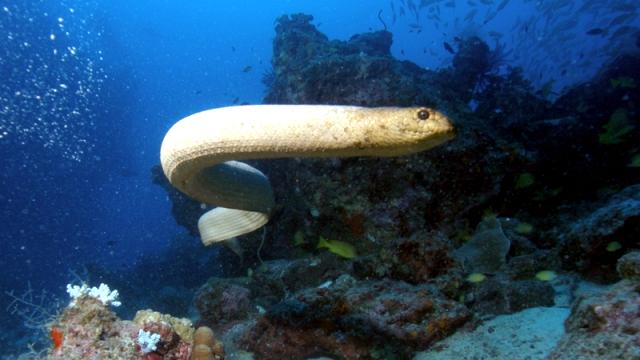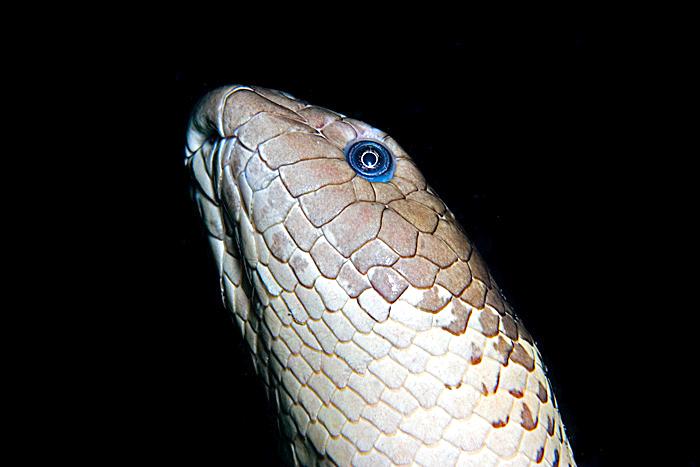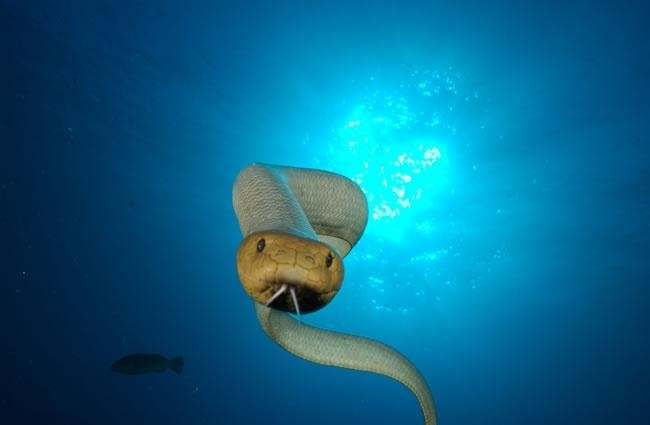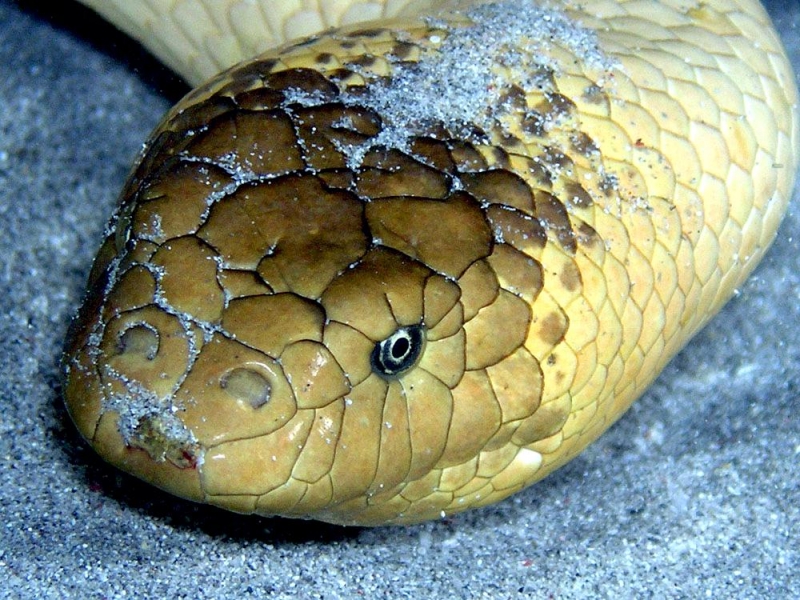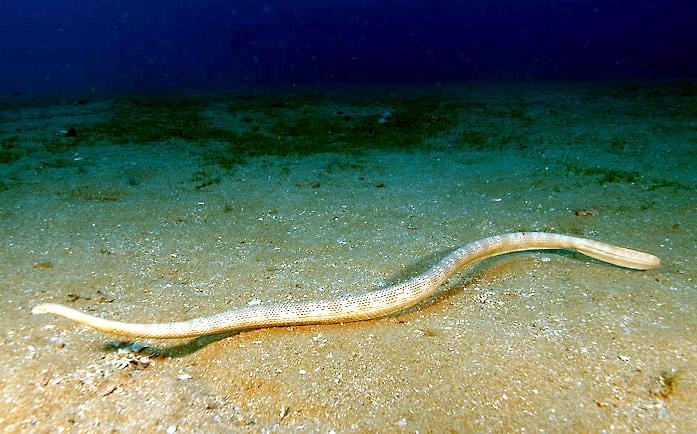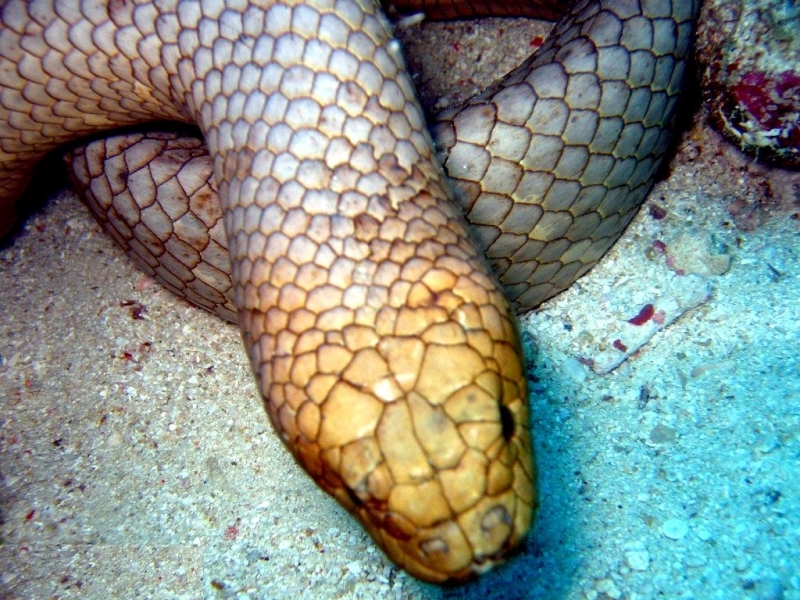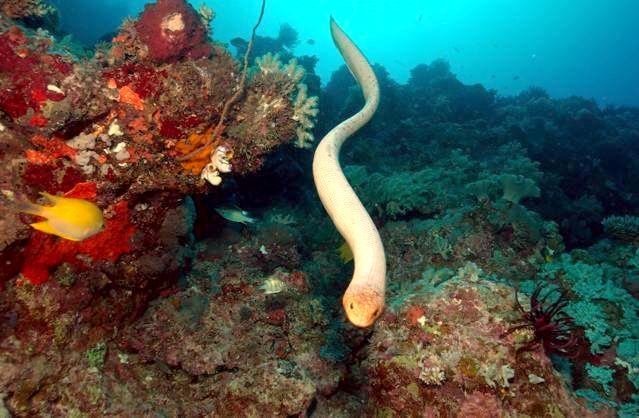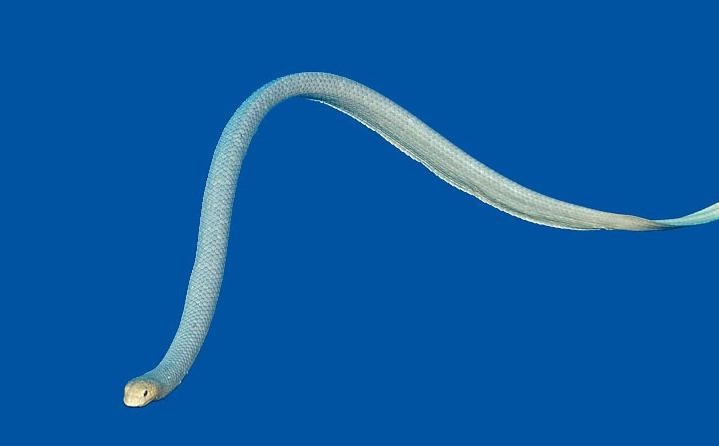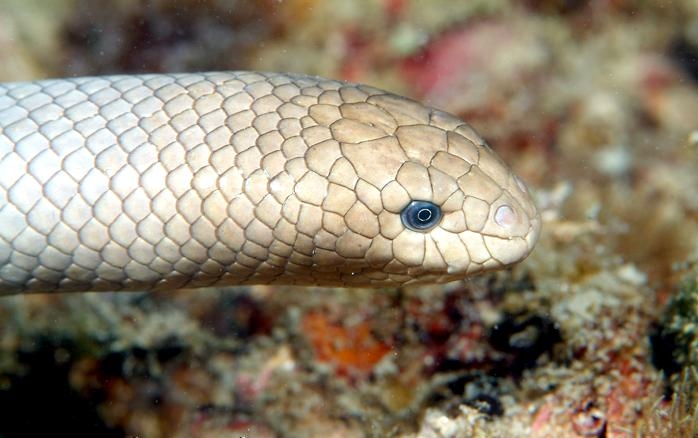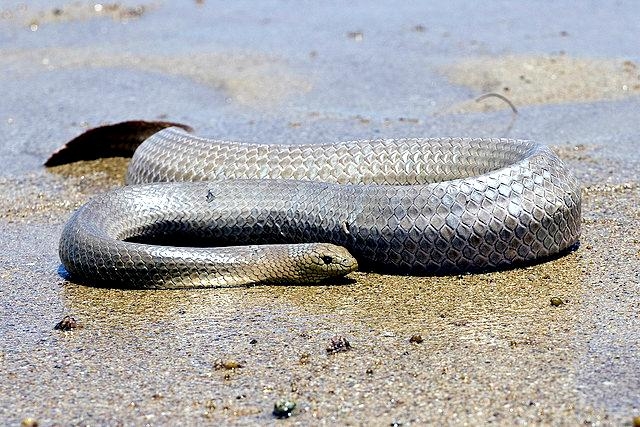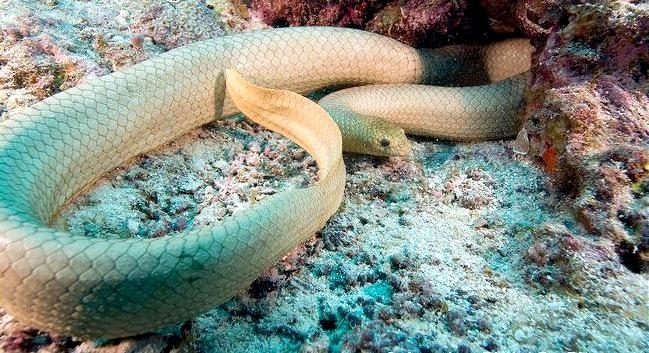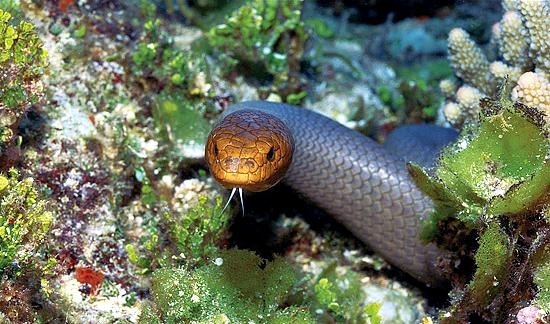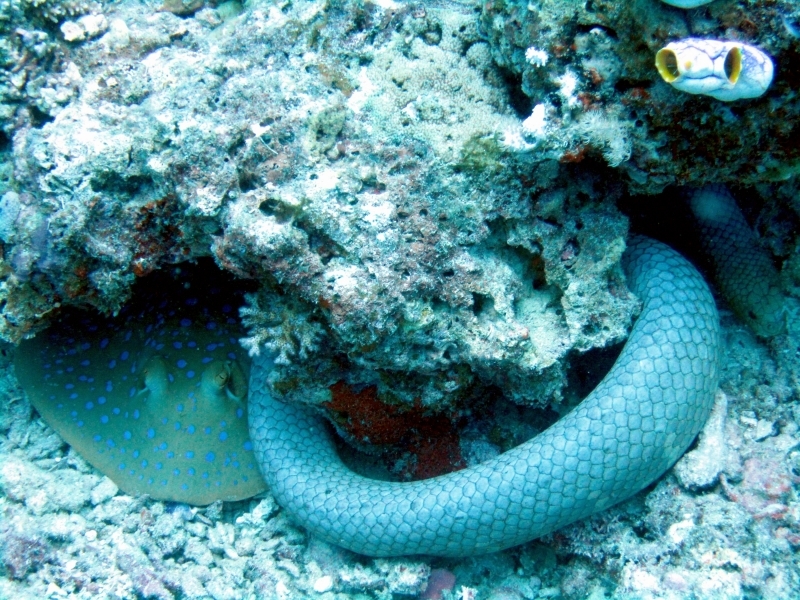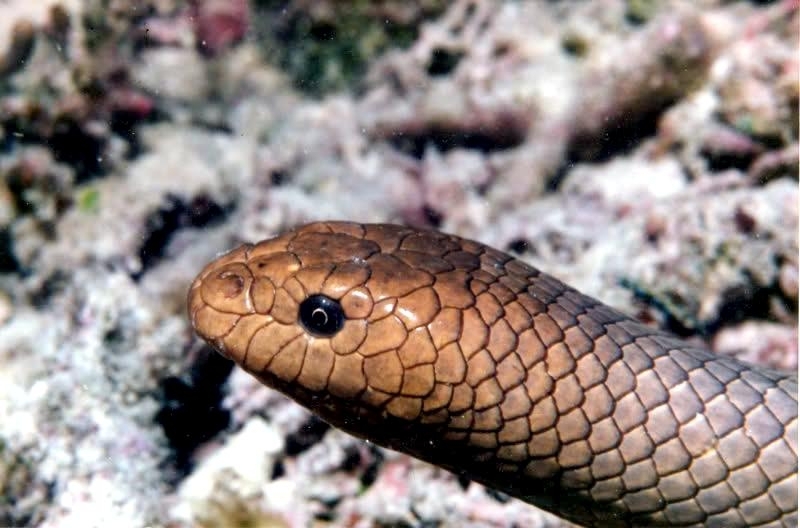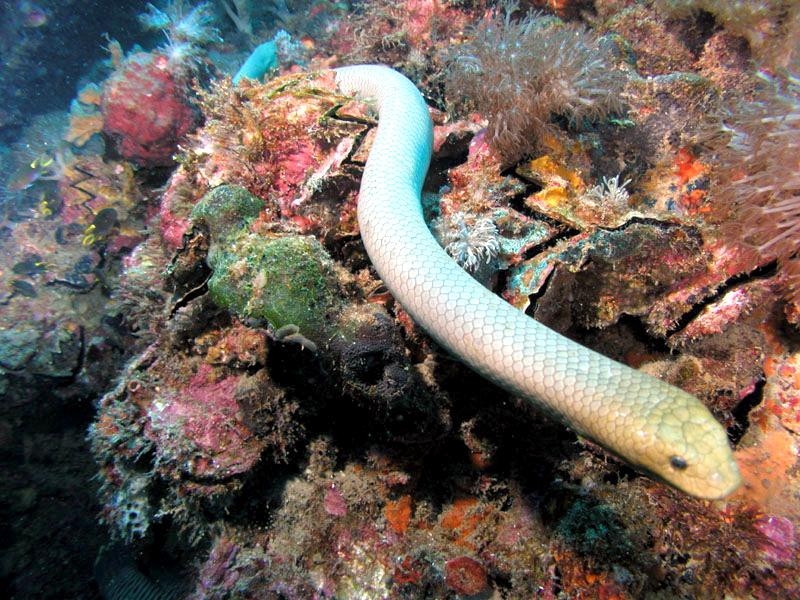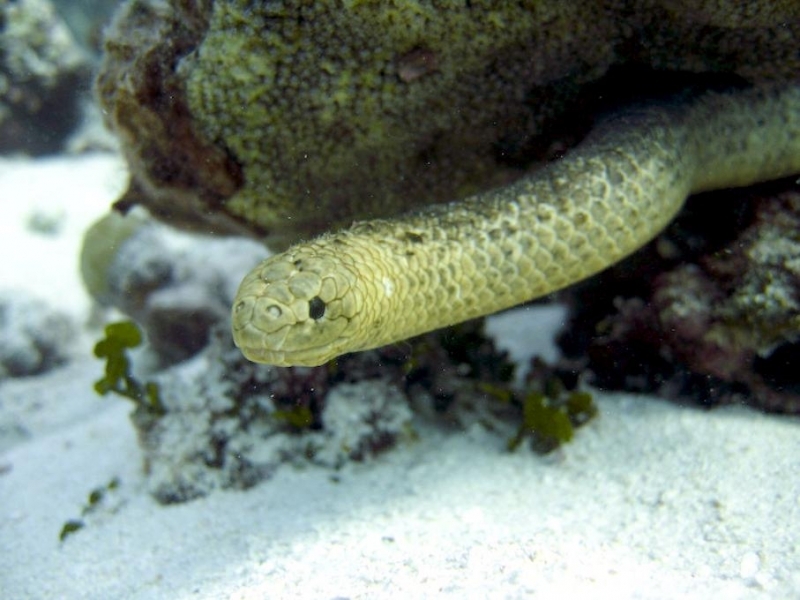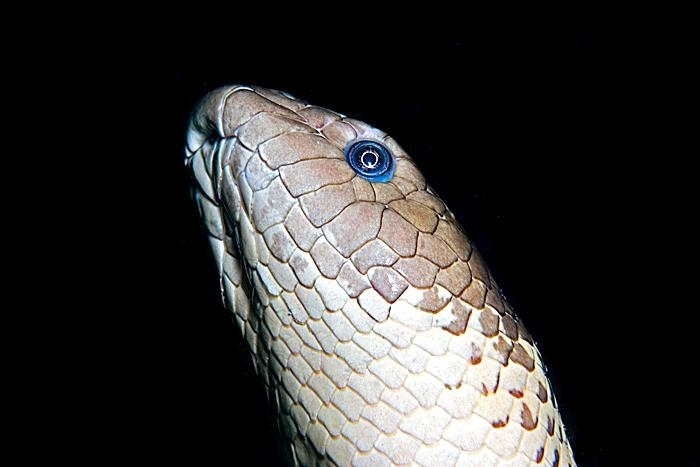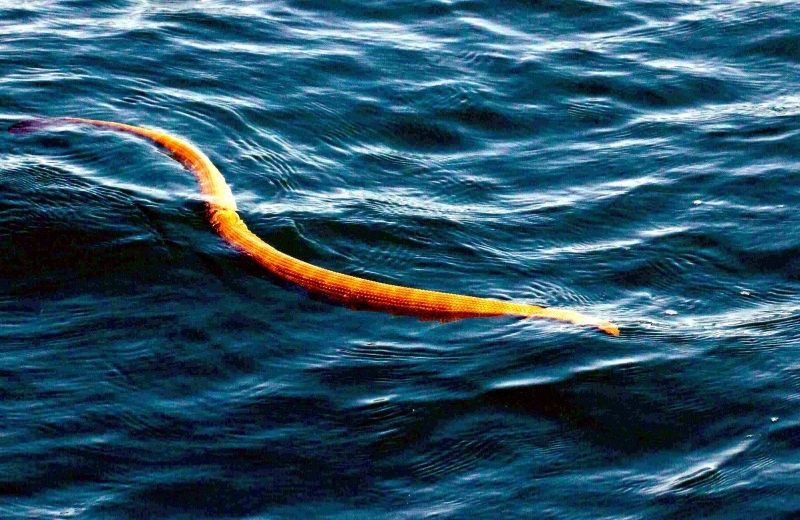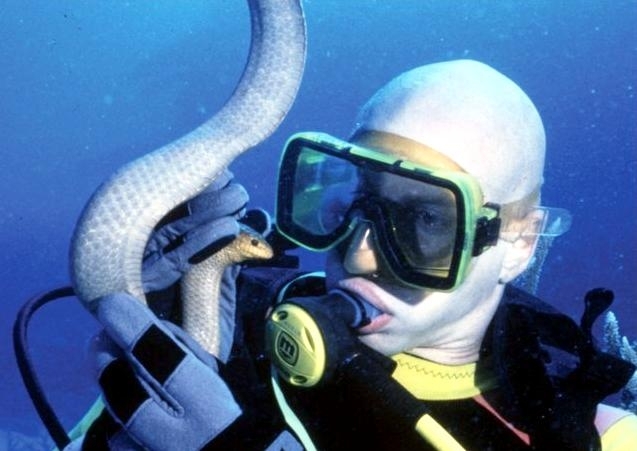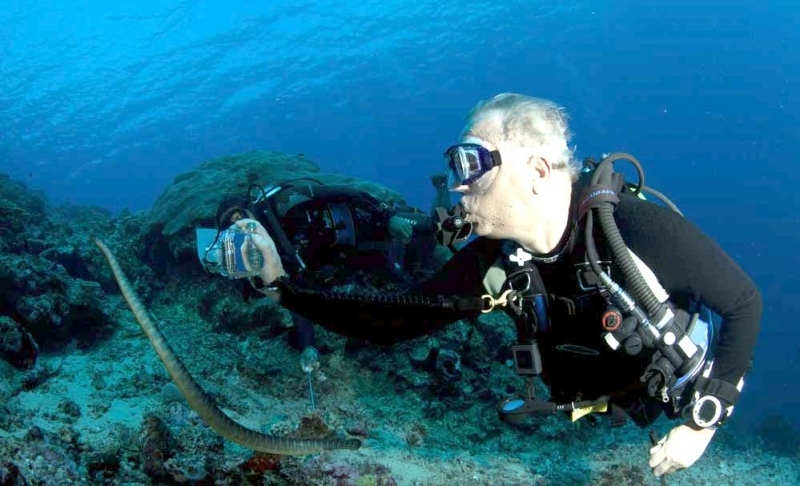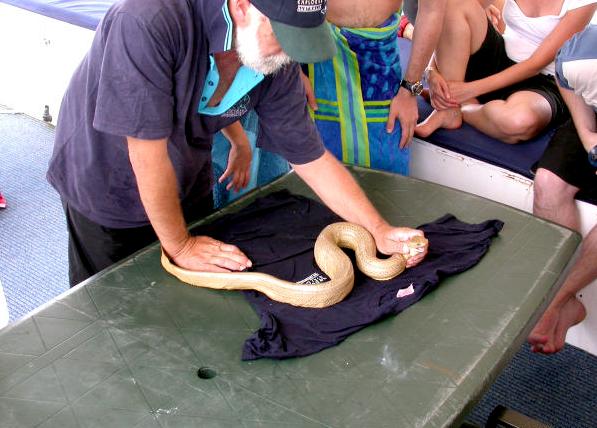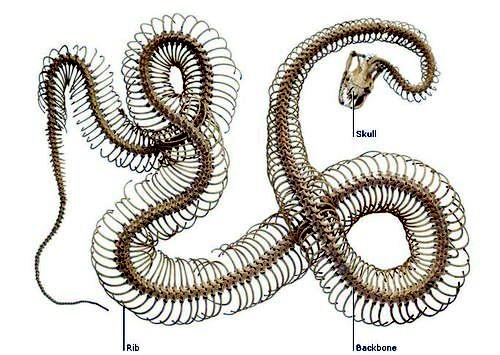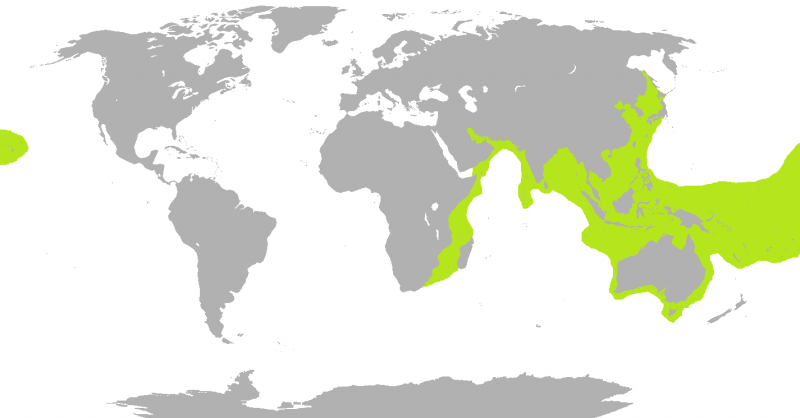“Aipysurus laevis”
The Olive Sea Snake also known as the Golden Sea Snake, is the most common sea snake along the northern coast of Australia and nearby coastal islands. It is found mainly in warm coastal waters in the Indo-Pacific where they live on coral reefs, lagoons & rocky shores to depths of 5 to 45 meters. In Australia, they are found in coastal waters off the northern half of Australia from Brisbane in east to Shark Bay in west and is the most common sea snake on the reefs of eastern Australia. Olive Sea Snakes live to about 15 years and gets its name from the color of its skin. It has a sturdy body with a flat, paddle-like tail and is purplish-brown above with paler-brown on the underside. Usually has some creamy-white scales scattered over body. They can be aggressive but attacks on divers are rare. Their average length is 1.2 meters, but they can grow to 2 meters. Its fangs may be 7 millimeters long and unlike many other sea snakes, it has a wide diet feeding on fish, fish eggs, cuttlefish, prawns, crabs and mollusks. They squeeze their prey and inject their venom. When not foraging at day or night or surfacing to breathe, Olive Sea Snakes hide under any convenient cover rather than returning repeatedly to the same shelter. They can stay underwater for almost 30 minutes. Males become sexually mature at about 3 years of age while females mature at 4 to 5 years. All sea snakes are ovoviviparous (development of eggs that remain within the mothers body up until they hatch or are about to hatch.). The young are born alive in the water where they live out their entire life cycle. In some species, the young are quite large, sometimes up to half as long as their mother. The larger females produce eggs in the southern spring (October). The embryos develop for about 6 months and young are born in the southern autumn (April). Individual females probably breed only every other year. They give birth in the sea to 2-5 live young with an average brood of 2.6 young.
Like all reptiles, Olive Sea Snakes breathe air but unlike the sea turtles, crocodiles, sea kraits and other marine reptiles which must nest on shore, the Olive Sea Snake’s entire life cycle occurs in the ocean. Growing to lengths over 6 feet (2 meters), this species is well adapted to a life on coral reefs. It has a flattened, paddle-like tail and a large lung that allows it to go hours between breaths at the surface. Given its length, it has special light sensing organs in the tail that allow it to remain totally hidden including the tail, in its preferred hiding places among the reef during daylight hours. The Olive Sea Snake is a highly venomous snake that actively hunts small to medium-sized fishes and benthic invertebrates including prawns and crabs. It prefers to hunt only at night and only comes out of its daytime hiding places to take occasional breaths. Olive Sea Snakes are naturally curious and are known to approach scuba divers, not aggressively but inquisitively especially at night. Though they only rarely bite people, their bites have been known to be fatal. Olive Sea Snakes do not leave the water to nest or for any reason at all. This species reproduces via internal fertilization and gives live birth to a few (6-8) well-developed young that do not receive any parental care. The young are significantly darker than adults and develop the olive-brown color as they mature. Large bony fishes, sharks and predatory birds are known to eat juvenile and even adults. Olive Sea Snakes are not fished by people, but they are at risk of accidental capture by fishers targeting other species particularly bottom trawlers. This species prefers to venture off of the reef at night, to hunt for bottom dwelling prey that is also targeted by fishers. This behavior increases their likelihood of being accidentally captured. Though scientists generally believe some populations of Olive Sea Snakes to be decreasing, it is considered a species of least concern across its entire distribution.
